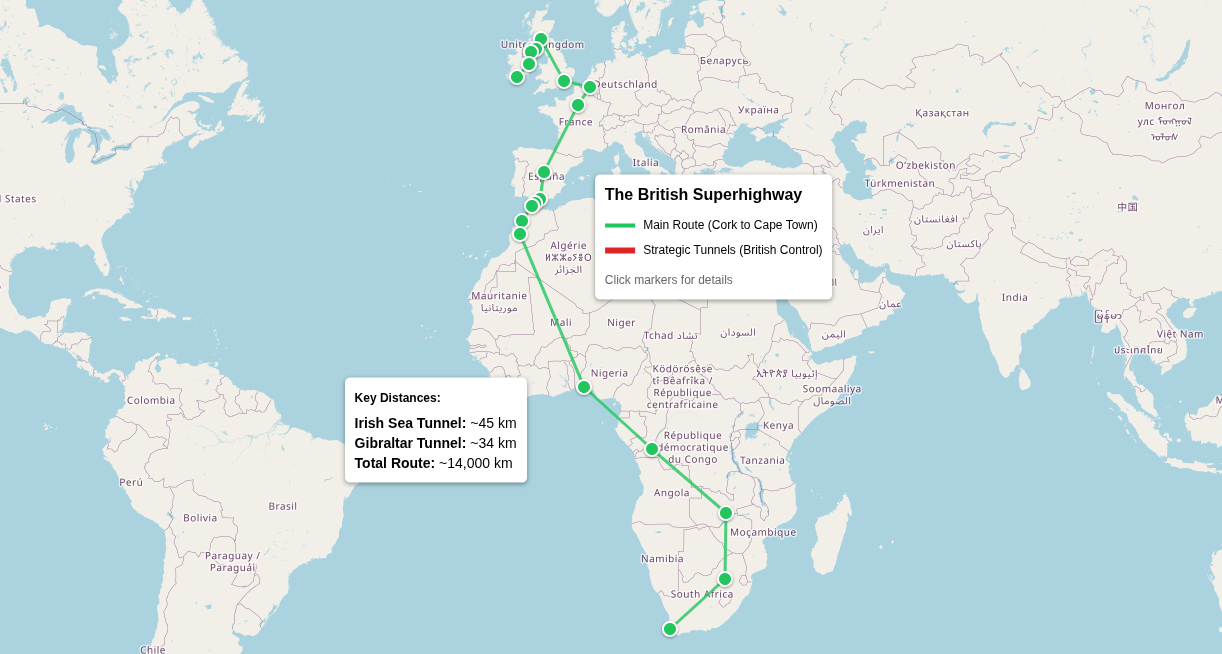When Immigrants Are Mass-Unemployed By AI, Who Pays The Welfare Bill?
The Treasury's master plan to pay the welfare bill of population = GDP assumes employment stays the same. If automation wipes out even 10% of jobs, we are staring into the abyss of an inflated population reliant on welfare. Remigration is becoming a matter of national economic survival.

Socialism always fails because it cannot produce anything. It can only redistribute. It always fails, every time, as the growth needed to power its cyclical redistribution collapses. It relies on assumptions which are subject to ruinous uncertainty. The socialist aim of seizing the means of production ends, every time, in the cessation of any production at all. As it fails, the blame game starts: it's failing because the wealth is being hoarded; it's the failure of the last lot; it's the pressure of abstract international forces; the workers are racist.
The coming inevitable collapse – historic in 1000 years across our history – can be directly attributed to the attempts to make a social safety net into an economic system.
His Majesty's Treasury has, across the span of eight decades, demonstrated a recurring and catastrophic failure: the inability to anticipate technological disruption when constructing long-term fiscal models.
This is not a matter of partisan disagreement or ideological preference; it is a documented pattern of institutional blindness, where assumptions about demographic and economic continuity have been systematically undermined by technological change the Treasury's actuaries did not foresee.
The Establishment has made three staggering, catastrophic errors all based around the thing they crave most: continuity:
- Assuming birth rates (i.e. generational size) would stay the same, so welfare would sustain itself;
- Assuming labour demand would scale proportionally with population, so a radical expansion of the working-age population (via immigration) would fix it;
- Assuming the internet and AI is a fad, con-job, and a nothingburger, so they can continue calling the electorate racist for complaining about #2.
The consequences of this pattern have compounded: each error has been "corrected" through policies built upon the same flawed methodology, creating successive layers of fiscal obligation the state cannot honour.
We now stand at the precipice of what may be the most severe manifestation of this failure: a welfare system designed for demographic stability, expanded through immigration policy predicated on perpetual labour demand, colliding with artificial intelligence automation concentrated in precisely those sectors where recent immigrants work.
The First Error: Beveridge and the Contraceptive Revolution
The Beveridge Report of 1942, which established the foundations of the British welfare state, was constructed upon a fundamental demographic assumption: each generation would remain constant in size or grow larger. The actuarial calculations underpinning the National Insurance system, state pensions, and the NHS relied upon a stable or increasing ratio of workers to dependents.
Beveridge assumed Britain could sustain something close to full employment after the war. His calculations rested on the idea unemployment could be held at around 3% of the labour force, meaning contributions into the system would remain steady and sufficient to cover the outgoings. Without this, the scheme’s financial balance would quickly collapse.
Let's explain it again for clarity: Beveridge assumed the government could maintain unemployment at no more than about 3% of the labour force. If too many people were unemployed, the system of contributions could not fund itself.
The funding design itself was simple: a flat-rate, compulsory national insurance contribution every worker would pay, regardless of income, in exchange for flat-rate benefits. Beveridge deliberately pitched these benefits at a subsistence level — enough to cover basic food, rent and clothing, but not more — on the assumption people would still want to work to enjoy a better standard of living. In this way, the state guaranteed a floor, but not a full income replacement.
His costings suggested with weekly contributions of only a few shillings per worker, the fund could pay out unemployment, sickness, widowhood and retirement benefits without creating an excessive burden on the Exchequer.
The system was designed to be self-sufficient, with the insurance fund broadly balancing over time. Crucially, Beveridge also assumed family responsibilities, private savings and continued employment would supplement these modest state payments, keeping the scheme affordable while still addressing the “five giants” of want, disease, ignorance, squalor, and idleness.
Weekly contribution for an adult male worker was envisaged at around 4 shillings and 3 pence (with smaller sums for women and young people). Benefits such as unemployment pay were set at about 24 shillings a week for a married couple (just above subsistence). He projected the system could run at a manageable annual cost if employment remained high, roughly £300–400 million a year (at 1942 prices).
In 1942, this seemed reasonable. The United Kingdom's total fertility rate hovered around 2 children per woman—well above replacement level. Historical patterns suggested fertility rates were durable across centuries. The welfare state could be funded through contributions from an expanding or stable workforce supporting retirees who would, in aggregate, represent a manageable proportion of the population.
The contraceptive pill, approved for use in the United Kingdom in 1961, provided women with unprecedented control over reproduction. Unlike barrier methods or withdrawal, oral contraceptives were reliable, simple to use, and divorced from the act of intercourse itself. Female autonomy over fertility increased dramatically.
The Abortion Act 1967 legalised termination of pregnancy under specified circumstances. Between 1968 and 1973, the number of legal abortions in England and Wales rose from approximately 23,000 to over 167,000 annually.
The demographic impact was immediate and severe. The United Kingdom's total fertility rate collapsed from 2.7 in the early 1960s to 1.8 by the mid-1970s—a decline of 33%. This rate has never recovered. As of 2024, the TFR stands at approximately 1.5, well below the replacement level of 2.1.
The Beveridge model's arithmetic broke.
Fewer workers entered the labour force than projected. The ratio of contributors to beneficiaries deteriorated rapidly. By the 1990s, the fiscal mathematics of the welfare state were unsustainable without either dramatic benefit cuts, tax increases, or a radical expansion of the working-age population.
The Treasury chose the latter.
The Second Error: Immigration as Fiscal Solution
From the 1990s onward, Treasury policy embraced a deceptively simple formula: increasing the population would increase GDP, which would generate tax revenue to fund the expanding welfare obligations created by the first error.
This was framed as a technocratic solution to a demographic problem, via our entry in the EU and Blair's belief in the "inevitability" of globalism.
Net migration to the United Kingdom, which averaged approximately 30,000 per year in the 1990s, accelerated dramatically. By 2022, net migration reached 745,000—more than fifteen times the 1990s average. Between 2021 and 2024, over 2 million visas were issued to individuals eligible for Indefinite Leave to Remain, granting full access to the welfare system after five years.
The policy rested upon a critical assumption: labour demand would scale proportionally with population. More people would create more jobs. More jobs would generate more tax revenue. The model was, once again, built upon continuity.
Treasury officials and Home Office policymakers, under pressure to maintain immigration levels whilst appearing selective, expanded the definition of "skilled worker" to include occupations previously considered low or medium-skilled. Care workers earning £25,000 annually—a wage requiring state benefit top-ups for many—were classified alongside software engineers and doctors as "Skilled Workers."
The health and social care sector accounted for approximately one-third of Skilled Worker visa grants between October 2024 and March 2025, with care workers representing the single most common occupation. The hospitality industry received over sixteen times more entry visas in 2024 than before Brexit, driven primarily by visas granted to chefs—an occupation newly made eligible under the post-Brexit system.
Dominic Cummings, former chief adviser to the Prime Minister, stated in 2025 the Treasury's "addiction to human quantitative easing" meant an immigration system designed to prioritise high-skilled workers was "hijacked" to achieve numbers three times higher than when Britain voted to leave the European Union.
The policy was explicit: import workers to generate GDP and tax revenue. The workers came. The visas were granted. The legal entitlements to benefits were created.
The Office for Budget Responsibility overestimated the average income tax and National Insurance contributions from migrants by £1,855 per person, leading to projections of migrant earnings artificially inflated by £20.5 billion and tax contributions overestimated by £6 billion through 2028-29. Its data suggests low-skilled immigrants cost the UK nearly £465,000 each by the age of 81, drawing more in benefits than they pay in taxes. According to a 2013 University College London study, non-Western immigrants cost the public £118 billion between 1995 and 2011.
Data from March 2025 showed approximately 15% of immigrants—roughly one million individuals—were in receipt of Universal Credit payments. This figure predates any significant AI-driven unemployment. 16 per cent of Universal Credit payments – £941 million monthly – are disbursed to households with at least one foreign national. 47.6 per cent of London’s social housing is occupied by foreign-born lead tenants.
801,000 migrants from the post-2020 wave likely to gain Indefinite Leave to Remain could impose a lifetime net fiscal cost of £234 billion—equivalent to £8,200 per UK household, spread across several decades. This calculation assumed normal employment patterns would continue.
They will not.
The Third Error: Artificial Intelligence and Labour Market Collapse
Artificial intelligence, particularly generative AI and large language models deployed from 2023 onward, is eliminating jobs at a pace and scale without modern precedent. The displacement is not theoretical or distant. It is occurring now, and it is concentrated in precisely those sectors where recent immigration has been highest.
More than 10,000 job cuts in the United States in the first seven months of 2025 were directly attributed to AI automation. Total U.S. private sector job cuts through July 2025 exceeded 806,000—the highest figure for the period since 2020. The technology sector alone announced over 89,000 layoffs, up 36% from the previous year.
In the United Kingdom, youth unemployment stands at 13.8%—halfway to Great Depression levels of 25%. Entry-level roles are disappearing. Entry-level job postings dropped 15% year-over-year, whilst references to "AI" in job descriptions surged 400% over two years.
41% of employers worldwide intend to reduce their workforce in the next five years due to AI automation. Anthropic CEO Dario Amodei predicted generative AI could eliminate up to half of entry-level office worker positions.
The occupations most susceptible to AI displacement are:
- Administrative and clerical roles: Data entry, scheduling, basic customer service—tasks now performed by AI agents at near-zero marginal cost
- Routine service work: Order-taking, basic food preparation, inventory management—increasingly automated
- Care work documentation and logistics: Whilst physical care remains human, the administrative burden of care work is being automated, reducing the number of workers required
- Entry-level professional services: Junior roles in accounting, law, consulting—work AI systems now perform competently
These are precisely the sectors where the United Kingdom concentrated recent immigration. Care workers represent the single largest occupation among Skilled Worker visa holders. Hospitality workers, granted visas in numbers sixteen times pre-Brexit levels, work in a sector where automation is accelerating rapidly.
The Treasury's immigration policy assumed labour demand would remain constant or grow. This assumption is failing in real time, precisely as the assumption of stable fertility failed in the 1960s.
The difference is scale. The contraceptive pill reduced the birth rate over decades. AI is eliminating jobs within quarters. The Treasury imported workers in the 2020s for jobs being automated in the 2020s. The lag between policy implementation and the revelation of error has collapsed from decades to years.
If AI eliminates 20% of jobs in care, hospitality, and administrative sectors over the next five years:
- At least 400,000 recent immigrants lose employment
- Universal Credit claims surge by £4-6 billion annually
- Tax revenue from these workers disappears (maybe £2-3 billion annually in income tax and NI)
- Fiscal deterioration: £6-9 billion annually, compounding
- Bond markets demand higher yields, increasing debt service costs
- Government is forced to cut spending elsewhere or raise taxes on shrinking workforce
- Economic contraction accelerates job losses, creating feedback loop
This is not speculative. The mechanism is straightforward arithmetic. The only uncertainty is the magnitude and timing of AI displacement.
From Unthinkable to Inevitable
Each Treasury error created irreversible obligations:
- Beveridge promised pensions and healthcare; these became political untouchables
- Immigration policy granted Indefinite Leave to Remain; this created irrevocable benefit entitlements
- The combination created a population with legal rights to resources the state cannot provide
Ratchets turn one direction. The obligations compound. The fiscal capacity deteriorates. The gap widens.
What cannot continue will not continue. When governments cannot service debt, cannot fund obligations, and cannot cut spending through institutional means, crisis forces the adjustment.
The forms this takes:
- Sovereign debt crisis: Bond markets refuse to lend except at prohibitive rates. Government forced into emergency austerity. Services collapse. Social order deteriorates.
- Inflation crisis: Government prints money to honour obligations. Currency devalues. Real wages collapse. Savings destroyed. Again, social order deteriorates.
- Political rupture: A movement offering radical solutions wins power, either through elections or extra-constitutional means, implementing policies previously deemed impossible.
All three scenarios involve mass suffering. All three make remigration—the expulsion of immigrant populations—shift from unthinkable to necessary within mainstream political discussion.
The Compounding of Error
The Treasury has demonstrated, across three generations, an inability to anticipate technological disruption when constructing fiscal policy. The Beveridge model assumed demographic stability; the contraceptive pill destroyed that assumption. Immigration policy assumed perpetual labour demand; artificial intelligence is destroying that assumption.
Each error was "corrected" through policies built on the same flawed methodology. The welfare state, designed for stable fertility, was propped up through immigration. Immigration, justified by labour demand, was expanded through redefinition of "skilled worker." The obligations compounded. The fiscal burden grew.
Now AI eliminates jobs in precisely the sectors where immigration concentrated. The 801,000 post-2020 migrants gaining Indefinite Leave to Remain will claim benefits they are legally entitled to for work disappearing beneath them. The tax base erodes. The debt spirals. The bond market loses confidence.
At 5.7% gilt yields and 13% youth unemployment, before AI acceleration, the United Kingdom is already in fiscal distress. The coming wave of automation will transform distress into crisis.
The rational policy response—dramatic state contraction and selective population reduction—is institutionally impossible. The civil service will not shrink itself. Electoral politics forbids honest discussion. Legal systems protect acquired rights. Democratic channels, ignored for 25 years, have lost legitimacy.
What remains is arithmetic. The government cannot pay what it owes. It cannot borrow indefinitely. It cannot print without triggering inflation. It cannot cut through normal means. It cannot tax a collapsing base.
When the crisis arrives—and it will arrive, because the mathematics demand it—the policies currently deemed unthinkable will be implemented because the alternative is national insolvency. Remigration will shift from fringe position to mainstream necessity not because populations become more xenophobic, but because the fiscal model collapses under its own contradictions.
This is not justice. This is arithmetic. And arithmetic, unlike politics, does not negotiate.
The Treasury built a system predicated on assumptions of continuity. Contraception broke the first assumption. Artificial intelligence breaks the second. The pattern repeats. The consequences compound. The crisis approaches.
Its incompetence is not just a policy failure. It is an engine of extremism. It creates the conditions where radical solutions become rational, where violence becomes survival, where the unthinkable becomes inevitable.
This is not a prediction to be celebrated. It is a warning to be heeded. But warnings require listeners, and the Treasury has been deaf for 80 years.
The compounding of error continues. The crisis accelerates. The arithmetic is unforgiving.
And when the collapse arrives, the question will not be why it happened. The answer is in the numbers, has been for years, visible to anyone willing to look.
The question will be why no one in power was willing to see it.






